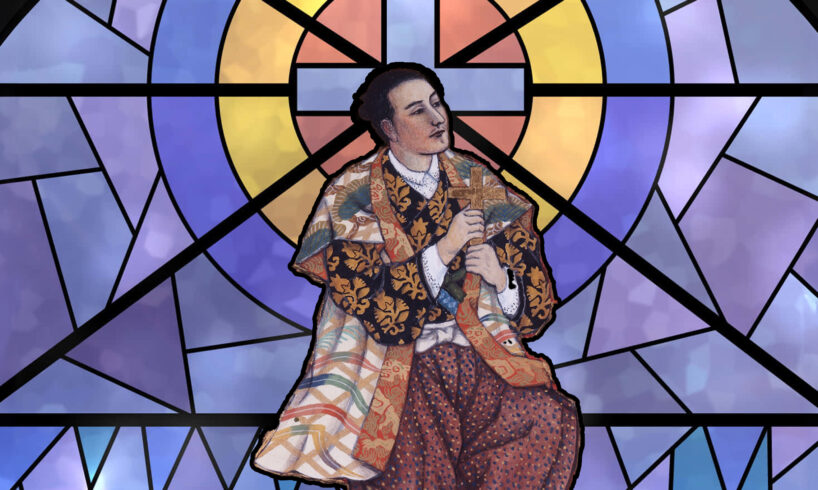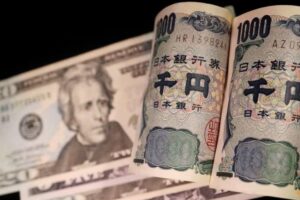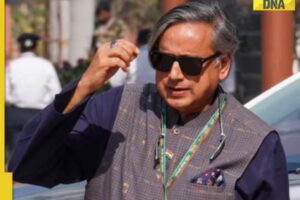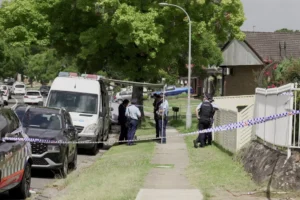
Christianity in Japan got off to such a promising start. After the first Jesuit missionaries arrived in the country in the mid-16th century, they quickly converted many Japanese people by securing the favor and protection of powerful warlords. Oda “Demon King” Nobunaga was — somewhat ironically given his nickname — on very good terms with the Christians. Tohoku warrior Date “One-Eyed Dragon” Masamune even sent a samurai to meet the pope.
But through a mix of paranoia, language barriers and plain old politics, the religion was banned in Japan in the early 17th century following decades of expulsions, persecution and martyrdoms. The Vatican currently recognizes hundreds of Japanese martyrs and 42 saints. Soon, that figure may rise to 43 if the church decides to canonize one Justo Takayama Ukon, a genuine Catholic samurai warlord.
Just One Samurai Candidate for Sainthood
Takayama Ukon was born in 1552 or 1553 in either modern-day Nara or Osaka to Takayama Tomoteru, one of the earliest Christian converts in Japan. The Takayama family held a lot of power, and the church considered them an important ally in spreading their religion in the country. Through influence from Portuguese missionaries, Tomoteru had his son and 150 members of the clan baptized in 1564, bestowing on Ukon the name Justo (Latin: Iustus), the “Just One.”
But you know how kids are, always rebelling against their parents, rejecting Christianity in favor of Zen Buddhism and the culture of the samurai until they get into a duel at age 18 or 19, kill their opponent, but become seriously wounded and spend months recuperating, all while learning to embrace Catholicism. Just typical childhood stuff. Happens every day.
Killing and Preaching
After his recovery, Justo got to work expanding the Takayama family’s power base and set out on numerous “campaigns” (for lack of a better word) or “slaughters” (for presence of a correct word). He served Nobunaga during part of the Ishiyama Honganji War (1570–1580) against Buddhist zealots led by a warrior monk who could’ve been shogun. Then, after Nobunaga’s death, he followed Toyotomi Hideyoshi all the way to the Siege of Kagoshima (1587) during the conquest of Kyushu. He did not, as far as we know, report seeing the flying dog that supposedly terrorized Hideyoshi.
In between his fighting, he was preaching Christianity and conducting mass conversions, because why bother with piecemeal proselytization when you can do things in bulk? By 1581, 70% of people around Takatsuki Castle in Osaka, one of his family’s bases of operation, were Christians. He also oversaw and encouraged the construction of seminaries, orphanages, chapels and churches throughout central Japan. However, while this apparently wasn’t his wish, the construction mania resulted in a few Shinto shrines and Buddhist temples being destroyed for timber, which made Justo more than a few enemies.
Justo Climbs Up on the Cross
In 1587, Hideyoshi Toyotomi issued an anti-Christianity edict pretty much out of nowhere, outlawing the religion and expelling missionaries. There had been some tensions between Christians and the Japanese government before, but the proclamation took many by surprise. Although it wasn’t widely enforced, many Japanese saw the writing on the wall and publicly renounced Christianity. Some continued in their faith in secret as kakure kirishitan — Japan’s “hidden Christians.”
Justo Takayama Ukon chose option C: He refused to apostatize and lost his lands, status and wealth, telling his tea ceremony teacher Sen no Rikyu (the most important figure in the history of chanoyu) that denouncing Christ went against his samurai spirit. Justo then went into exile, first in Shodoshima and then in Kanazawa, for his own safety. Many other Japanese Christians weren’t so lucky.
In 1597, Hideyoshi had 26 Catholics (foreign and Japanese) crucified in Nagasaki. Tokugawa Ieyasu continued this policy, even ramping up the religious persecution, which erupted in 1622 during the Great Genna Martyrdom, when 55 Christians were burned alive or beheaded. Justo never lived to see it, though. After Ieyasu issued his own anti-Christianity edict back in 1614, the samurai warlord felt that he was no longer safe in Japan and set sail for the Philippines. He did not report seeing Oda Nobunaga anywhere there.
Justo Takayama Ukon Ascends
Justo was welcomed warmly in Manila by the Catholic Church, which wanted to use him as a rallying symbol for an invasion of Japan to forcefully convert the country. But Justo wanted nothing to do with it. He was tired from facing so much hatred because of his faith, and died a little over a month after arriving in the Philippines, seemingly from exhaustion, but Pope Francis officially classified it as suffering for his faith to make him a martyr in 2016. Calls for the Catholic Church to recognize Justo Takayama’s contributions to Christianity started as early as 1630, but better late than never.
On February 7, 2017, Justo Takayama Ukon was officially beatified in Osaka with an audience of 10,000 faithful. His feast day is February 3. Finally, in 2023, Thomas Aquino Manyo Maeda, the Archbishop of Osaka-Takamatsu, confirmed that the Vatican is looking into possible miracles connected to Justo, the final step before canonization. If everything goes right, soon Roman Catholics around the world will be able to pray to an honest-to-god samurai warlord saint who fought under the Demon King. If this is a ploy to get more people interested in Catholicism, then all we can say is “well played.”
Discover Tokyo, Every Week
Get the city’s best stories, under-the-radar spots and exclusive invites delivered straight to your inbox.





